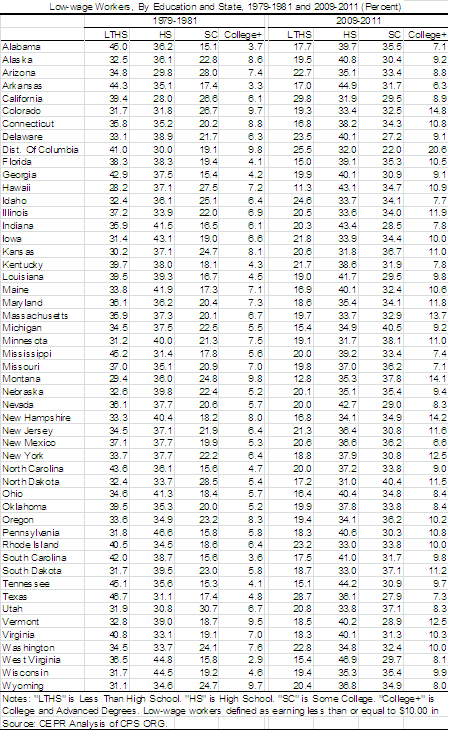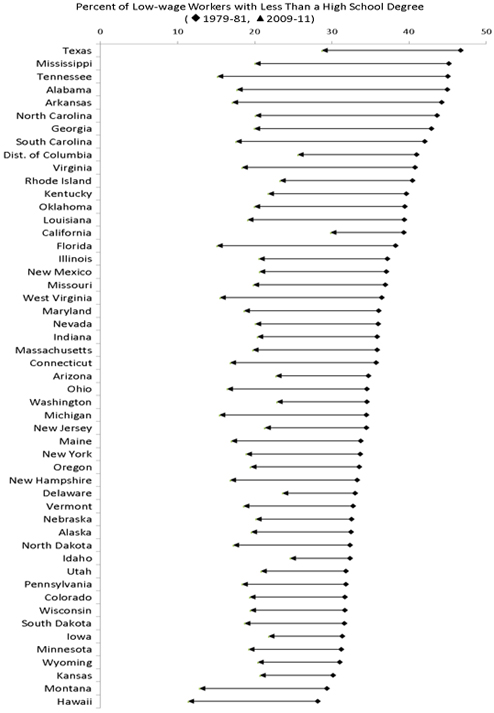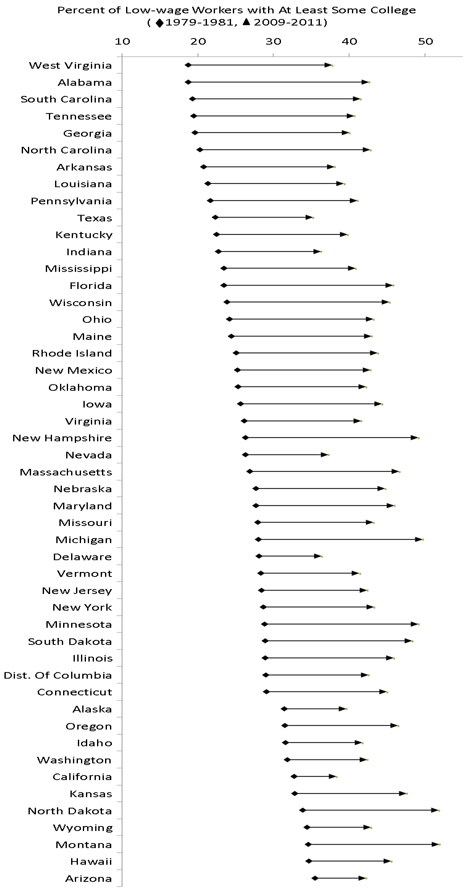April 13, 2012
In a recent CEPR brief, we examined the decades-long rise in the educational attainment of low-wage workers at the national level. The table and figures below (or after the jump) show this same educational upgrading is evident across all 51 states (including the District of Columbia).
The table shows the share of low-wage workers at four levels of educational attainment: less than a high school degree, a high school degree (but no more), some college (but not a four-year degree), and a college degree or more. As in our earlier post, we define a low-wage worker as anyone making $10.00 per hour or less (in inflation-adjusted 2011 dollars). To compensate for the small sample sizes in many states, we’ve pooled three years of data and compare 1979-1981 to 2009-2011.
So, for example, in 1979-1981, in Tennessee 45.1 percent of low-wage workers had less than a high school degree, 35.6 percent had a high school degree (but no more), 15.3 percent had some college education (but not a four-year degree), and 4.1 percent had finished college (or more). By 2009-2011, the share with less than a high school degree had fallen to 15.1 percent, while the share in each of the other education categories had increased: high school, up 8.6 percent; some college, up 15.6 percentage points; college or more, up 5.6 percentage points. Tennessee, by the way, was the state with the greatest drop over the period in low-wage workers with less than high school degree, from 45.1 percent to 15.1 percent. The District of Columbia, meanwhile, had the greatest increase in low-wage workers with at least a college degree: from 9.8 percent for the years 1979-1981, to 22 percent in 2009-2011.
Table 1

Figure 1 displays the dramatic decline in every state in the share of low-wages workers with less than a high school degree.
Figure 1

Figure 2 shows the increase in the share of low-wage workers in each state with at least some college education –including those in the “some college” category as well as those with a four-year degree or an advanced degree.
Figure 2

In every state, low-wage workers are much better educated today than they were three decades ago.







